As healthcare professionals, you understand the critical role that a supportive environment plays in a child's optimal development. While nutrition, physical activity, and emotional support are often emphasised, sleep is a key factor that should not be overlooked. Quality sleep is not just a luxury, it’s a fundamental pillar of healthy growth and development in children. From cognitive development to emotional health, sleep has far-reaching benefits that can shape a child’s well-being in both the short and long term.
In this article, we’ll explore why sleep is essential for children's development and the consequences of insufficient sleep.
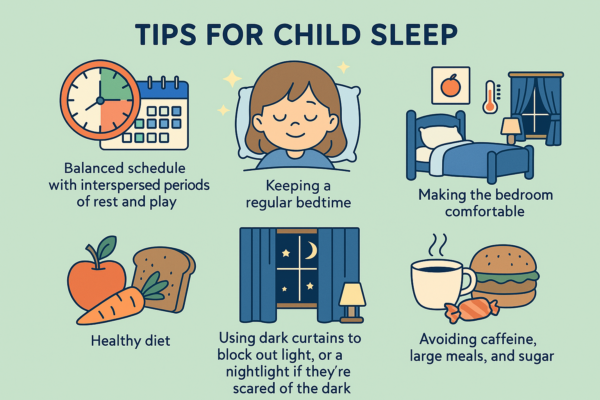
Sleep is not merely a break for the body and mind, it’s a vital process that supports nearly every aspect of development.
Sleep is crucial for cognitive functions such as memory, learning, and problem-solving. During sleep, the brain consolidates memories and processes new information, strengthening neural connections and preparing children for the day ahead. Adequate sleep enhances academic performance by boosting attention span, information retention, and focus. It also aids in critical thinking and creativity, enabling children to absorb and apply knowledge more effectively.
Good sleep is intricately linked to emotional regulation and mental health. Well-rested children exhibit better emotional stability and are better equipped to manage stress and anxiety. Inadequate sleep can lead to irritability, mood swings, and increased levels of anxiety or depression. Sleep-deprived children are more likely to act impulsively or display behavioural problems, such as aggression or hyperactivity. Sleep helps children process their emotions and respond to challenges in a healthier way, promoting overall emotional resilience.
Sleep plays a crucial role in physical development. During deep sleep, the body releases growth hormones responsible for bone and muscle growth and tissue repair. Sleep also strengthens the immune system, helping children fight off illnesses and infections. Adequate sleep reduces the risk of chronic conditions like obesity, as insufficient sleep can lead to unhealthy eating habits and lower physical activity levels. Additionally, sleep supports high energy levels, facilitating active play and daily activities.
A growing child’s brain undergoes rapid development, and sleep is essential for this process. Sleep supports the development of neural pathways crucial for learning, memory, and emotional regulation. Research shows that children who get sufficient sleep tend to have healthier brain structures, associated with enhanced cognitive functions such as memory retention, problem-solving, and emotional control. Sleep allows the brain to repair and refresh, enabling children to tackle new learning challenges with ease.
The benefits of good sleep habits extend well beyond childhood. Studies indicate that children who consistently sleep well are more likely to experience fewer mental health issues as they grow older. Early sleep patterns are linked to better physical and emotional health in adulthood, contributing to improved mental health, academic performance, and overall well-being. Establishing healthy sleep routines during childhood sets a strong foundation for lifelong resilience and mental health.
Lack of sleep can have profound negative effects on a child’s physical, emotional, and cognitive development. While occasional sleepless nights are normal, chronic sleep deprivation can lead to long-term consequences.

One of the first signs of insufficient sleep is a drop in academic performance. Sleep deprivation affects concentration, memory, and the ability to focus, all essential for learning. Sleep-deprived children often struggle with tasks requiring sustained attention or problem-solving and may find it harder to process and retain information, hindering their academic performance and intellectual growth.
Sleep deprivation significantly contributes to mood swings and emotional instability. Children who don’t get enough sleep are more likely to experience heightened stress and emotional exhaustion, leading to outbursts of anger, irritability, and feelings of sadness or anxiety. Over time, sleep deprivation can contribute to more serious emotional issues such as depression and anxiety. Sleep is crucial for mental clarity, emotional regulation, and the ability to cope with challenges, making it essential for emotional health.
Sleep-deprived children often display erratic behaviour. They are more likely to act impulsively, make poor decisions, and become easily frustrated, leading to tantrums or aggression. Studies show that children with inadequate sleep are more likely to engage in risky behaviours, and their ability to control impulses diminishes.
Chronic sleep deprivation can weaken the immune system, making children more susceptible to illnesses. Sleep strengthens the body’s defence systems, helping children fight off infections. Children may experience more frequent colds, infections, and illnesses without adequate sleep, affecting their overall health and energy levels.
In the long term, lack of sleep is associated with a higher risk of developing health issues like obesity, diabetes, and hypertension. Sleep deprivation can interfere with the body’s metabolism, leading to unhealthy weight gain. It also disrupts the body’s hormonal balance, including hunger-related hormones, which can lead to overeating and poor food choices. Sleep plays a critical role in physical growth, and insufficient sleep can impair a child’s development, leading to stunted growth or delayed physical milestones.
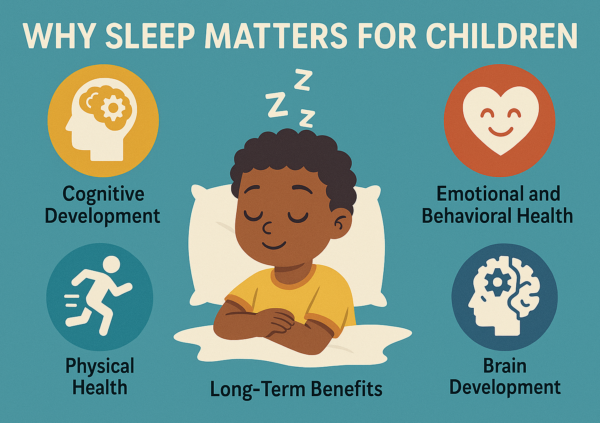
As healthcare professionals, you play a crucial role in advising parents on creating the right environment and establishing routines that support healthy sleep patterns for their children. Here are some strategies to help promote better sleep:
Children thrive on consistency, so a regular bedtime schedule can make a significant difference. Educate parents on the importance of consistent sleep and wake times to help regulate their child’s internal clock. Suggest incorporating a soothing pre-bedtime routine, such as reading a story or engaging in calming activities, to signal to the child’s body that it’s time to wind down.
Advise parents to create a cool, quiet, and dark room to promote restful sleep. Recommend using blackout curtains or a white noise machine if the child is sensitive to light or external noise. Ensure the child’s bed is comfortable and suggest limiting distractions, such as electronic devices, in the bedroom.
Inform parents about the impact of caffeine and sugary drinks on a child’s ability to fall asleep. Encourage them to avoid giving their child caffeine in the afternoon or evening. Additionally, advise limiting screen time in the hour before bedtime, as the blue light emitted from devices can interfere with the production of melatonin, the hormone responsible for sleep regulation.
If a child is experiencing nighttime incontinence or struggles with staying dry overnight, choosing the right protection is essential. Ontex Healthcare Australia offers a trusted range of iD incontinence products for kids, designed specifically to support comfort, dryness, and uninterrupted sleep.
Made with soft, breathable materials and a secure, comfortable fit, iD products help minimise skin irritation while delivering maximum absorbency. This ensures children remain dry and confident throughout the night. With the appropriate overnight protection, sleep quality improves, leading to better physical and emotional outcomes.
Parents can request a free sample to try at home. Healthcare professionals may request up to 40 free samples at a time, making it easier to support families in identifying the most effective incontinence solutions for their children.
Quality sleep is essential for a child's development, influencing cognitive performance, emotional regulation, physical growth, and long-term health. Healthcare professionals play a key role in educating families about effective sleep hygiene and environmental factors that promote restful sleep.
For children facing challenges such as incontinence, recommending the right products is vital to maintaining comfort and dignity overnight. The iD range for kids provides the absorbency and comfort required to keep children dry and help them sleep soundly.
By combining evidence-based guidance on sleep practices with effective incontinence products, families can be supported in fostering the conditions necessary for healthy development, learning, and emotional well-being.
Sources:
https://www.nhs.uk/
https://thesleepcharity.org.uk/
https://www.bps.org.uk/
The holiday season in Australia is a wonderful time to relax, celebrate, and make memories with your family. It’s a unique mix of festive joy and summer fun, providing plenty of opportunities for parents to build strong family connections. Here are some memorable and meaningful activities you can enjoy with your kids this Christmas, while staying comfortable and confident thanks to iD Comfy Junior products.
Though it’s warm outside, baking is still a favourite Christmas tradition. Whether it's gingerbread or pavlova, baking can sometimes get messy—so be prepared! iD Comfy Junior products offer reliable protection, making it easy for parents to focus on family fun without a worry. Share treasured family recipes or try creating festive Aussie classics like Lamingtons or Anzac biscuits. These delicious moments are more than just snacks—they’re memories in the making.
Get crafty with handmade ornaments or outdoor-friendly decorations like garlands of eucalyptus leaves and native flowers. Making Aussie-inspired holiday crafts is a creative way for your family to bond and add a personal touch to your home. You can also try decorating your outdoor space for a backyard barbecue or Christmas picnic!

One of the most magical parts of Christmas is seeing all the lights! Across Australia, many neighbourhoods transform into enchanting displays of colour and creativity. Head out in the cool of the evening with your kids to explore the festive sparkle near you. And with iD Comfy Junior Pants (4-7 years) or iD Comfy Junior Pants (8-15 years), you’ll have peace of mind that your child is comfortable and supported the whole time.

Take advantage of the summer evenings by setting up an outdoor projector and blanket area. Watch festive classics like The Grinch or Elf under the stars. For a truly Aussie touch, add a platter of mango, cherries, and ice-cold drinks to snack on during the movie.
Document your family’s holiday together in a fun, creative way. Take photos during your holiday activities, collect small keepsakes, and sit down together to arrange them into a scrapbook. Kids can add stickers, drawings, or captions. Share stories of your own childhood Christmases, blending tradition with new memories

Christmas in Australia wouldn’t be complete without a trip to the beach! Pack a picnic, bring the cricket set, and enjoy the sunshine. While your little ones enjoy the day, iD Comfy Junior Slip ensures they feel comfortable, letting both you and them focus on fun in the sun.

After a busy day of holiday fun, wind down with some reading. Whether it’s a classic like The Night Before Christmas or a summery Aussie tale like An Aussie Night Before Christmas, reading together is a soothing holiday tradition. Take turns reading aloud, and share the delight of storytelling with your children.
The holidays are about treasuring time with your loved ones. With iD Comfy Junior products, you and your family can enjoy every moment, worry-free. Designed to feel like real underwear, these products ensure comfort for kids during any activity—whether they’re baking, swimming, or stargazing.
This Christmas, celebrate the joy of togetherness, and make memories that will stay with your family for years to come. Happy holidays!
Caring for a loved one with incontinence can be a challenging journey, but it’s also an act of love and strength. As an informal caregiver, you are not alone, and your emotions—from frustration to deep empathy—are valid. Here’s how to support your loved one with confidence and compassion while also taking care of yourself.
Incontinence can deeply impact a person’s sense of dignity and independence. Your loved one might feel embarrassment or shame, and it's important to reassure them that these feelings are okay. Practice empathy by listening to their concerns without judgment and reminding them that incontinence is a common health condition that doesn’t define who they are. Encourage them to express their feelings openly and validate their experiences by acknowledging their emotions.
Practical Tip: Use reassuring phrases like, "I understand this is difficult for you, and I’m here to help." Avoid dismissing their feelings, and instead, offer comfort by being patient and present.
Establishing a daily routine can help create a sense of stability and comfort for both you and your loved one. Consistency in care can reduce anxiety and allow them to feel more in control. Let them be involved in decisions about their care whenever possible, from choosing the right products to deciding on their daily activities.
Practical Tip: Create a visual schedule that includes mealtimes, hygiene routines, and enjoyable activities. This can help your loved one anticipate what’s coming next and feel more in control of their day.
Psychological Insight: Predictable routines can reduce stress and foster a sense of safety. Involving your loved one in decision-making can also help rebuild their confidence and autonomy.
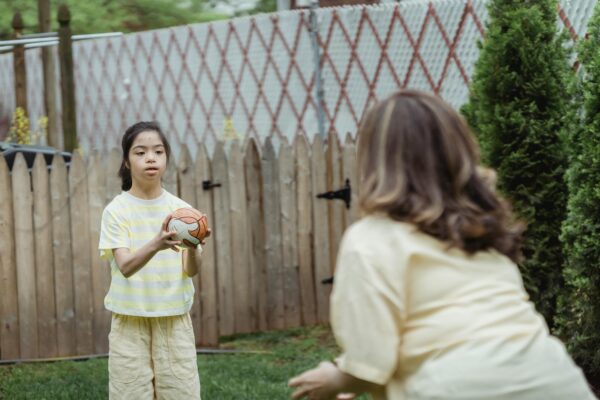
When discussing incontinence, choose your words with care. Use gentle language that respects their dignity, avoiding phrases that may feel clinical or impersonal. Your words can be powerful tools in helping your loved one feel valued and understood.
Practical Tip: Instead of saying, "It’s time to change your diaper," try saying, "Let’s get you more comfortable." Small changes in language can have a big impact on preserving dignity.
Psychological Insight: Using positive and non-judgmental language helps reduce the stigma around incontinence and supports emotional well-being. Communication should be empathetic, focusing on comfort and care rather than the condition itself.
It’s easy to forget about your own needs when caring for someone else. However, taking time for yourself isn’t selfish—it’s essential. Find small moments for activities you enjoy, whether it’s reading, walking, or simply relaxing. Remember that your well-being is crucial to providing compassionate care.
Practical Tip: Set aside at least 15-30 minutes each day for yourself. Use this time to do something that relaxes or energizes you, like practicing deep breathing, taking a walk, or connecting with a friend.
Psychological Insight: Caregiver burnout is real, and prioritizing your own needs helps prevent it. By taking care of yourself, you are ensuring that you have the energy and emotional capacity to provide the best possible care for your loved one.
Recognise and celebrate the small victories. Whether it’s a day without leaks, a successful outing, or simply a moment of laughter, acknowledging these moments can strengthen your bond and bring positivity to the care experience. These shared moments remind both of you that progress comes in different forms.
Practical Tip: Keep a journal of positive moments or small achievements. Reflecting on these can help maintain a hopeful outlook and remind both you and your loved one of the progress being made.
Psychological Insight: Celebrating small wins helps reinforce positive behaviors and creates a sense of accomplishment, which is crucial for maintaining motivation and emotional well-being for both caregiver and loved one.
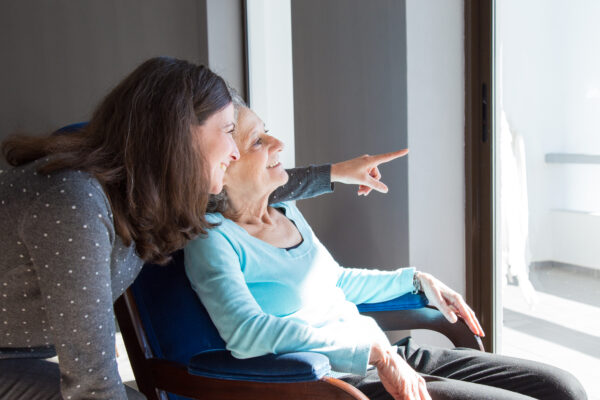
Don’t hesitate to seek help from support groups or professional resources. Speaking with others who understand what you’re experiencing can be comforting and provide you with practical tips. It’s okay to admit that you need support too—caregiving is a shared journey, not something you need to handle alone.
Practical Tip: Look for local or online support groups for caregivers. Connecting with others who share similar experiences can provide emotional relief and practical strategies to make caregiving more manageable.
Psychological Insight: Sharing experiences with others helps reduce feelings of isolation and provides a sense of community. Knowing that others face similar challenges can be empowering and help build resilience.
Providing care is a powerful expression of love. By embracing empathy, maintaining open communication, and prioritizing your own well-being, you can support your loved one through their incontinence journey with confidence and compassion.
If you or your loved ones are dealing with the symptoms of incontinence, iD provides a full range of products that offer effective and discreet solutions. Our pads, pants, and other incontinence products are specially designed to keep you comfortable, dry, and free from unwanted odours—so you can continue living your active lifestyle with confidence.
Find the right product for your needs
Explore our incontinence products here
Halloween is a time when imaginations run wild—when kids transform into their favorite superheroes, ghosts, or mythical creatures. The thrill of the night, filled with candy and adventure, should be an experience every child can enjoy without worry. But for parents of children with incontinence, the prospect of navigating a night full of excitement, distractions, and the need for quick bathroom breaks can feel daunting.
This guide isn’t just about managing the night—it’s about transforming Halloween into a joyful, worry-free celebration where your child can shine, costume and all. Let’s dive into creative, thoughtful ways to make this Halloween not just manageable, but magical for your child.
The right costume can turn Halloween into a night of pure fun, allowing your child to immerse themselves in the excitement without a second thought. Here’s how to find that perfect balance:

Halloween night is all about adventure, and a little bit of planning can ensure its smooth sailing:

Arm yourself with a discreet, stylish bag that holds everything you might need:
Halloween is meant to be a night of fun, not stress. Equip your child with the tools to feel confident and excited:

If you’re heading to a Halloween party or gathering, a little communication goes a long way:
At the end of the day, Halloween is about joy, creativity, and making lasting memories. Keep the focus on what makes your child happiest:

Supporting your child with incontinence on Halloween is about more than just managing their needs—it’s about empowering them to enjoy every moment of this magical night. By choosing the right costume, planning strategically, and focusing on mindfulness and fun, you can ensure that Halloween is a night your child will look back on with joy. With a little creativity and preparation, you’ll help your child feel confident, comfortable, and ready to embrace the adventure that is Halloween.
Spring and summer is a time for fresh flavours, vibrant colours, and enjoying meals with loved ones. For those managing incontinence, finding delicious and nutritious recipes that support bladder health can be challenging. This guide will help you navigate seasonal-friendly foods and recipes designed to manage incontinence, allowing you to enjoy delicious fruits without added worries.

Incontinence is a common condition, especially among the elderly. Dietary choices play a significant role in managing incontinence, as certain foods and drinks can either help or hinder bladder control.
Fiber helps regulate bowel movements, which is essential for those with incontinence. A diet rich in fibre can prevent constipation, which can exacerbate bladder problems. Additionally, vitamins and minerals such as magnesium and potassium are beneficial for bladder health. Including foods rich in these nutrients can help manage incontinence effectively.
During this period, many fresh produce items are both delicious and supportive of bladder health. Here are some of the best seasonal foods to include in your diet:
Seasonal Fruits:
Vegetables and Greens:
Staying hydrated is crucial. However, it is important to hydrate without overloading the bladder. Water is the best choice, but herbal teas and diluted fruit juices can also be beneficial. Foods with high water content, like cucumbers and certain fruits, are excellent for hydration.
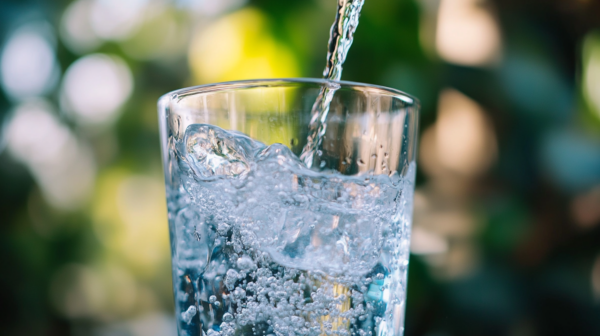
Here are some incontinence-friendly recipes:
Breakfast - Berry Smoothie: A refreshing smoothie made with blueberries, strawberries, Greek yogurt, and a splash of almond milk. This drink is high in antioxidants and fiber, and it is easy on the bladder.

Lunch - Quinoa Salad: Quinoa salad with cucumbers, cherry tomatoes, spinach, and a light olive oil dressing. This meal is rich in fiber and essential nutrients, making it a perfect lunch option.

Dinner - Grilled Chicken and Veggies: Grilled chicken served with a side of steamed broccoli and bell peppers. This dish is high in protein and low in bladder irritants, ensuring a satisfying yet healthy dinner.

Create a weekly meal plan that incorporates a variety of incontinence-friendly foods. Ensure each meal includes a good balance of fibre, protein, and hydration to maintain overall health and manage incontinence effectively.
By focusing on seasonal produce and incorporating these tips and recipes, you can enjoy meals that support your health and manage incontinence effectively..
For parents of children with disabilities, there can be an additional challenge of keeping their children engaged, entertained, and safe. Finding sensory activities that cater to an individual child’s needs can make all the difference in ensuring a fulfilling time for both children and parents. This blog post will guide you through a variety of sensory activities designed to keep your child stimulated and happy.
Engaging in sensory activities offers several benefits:
Diverse types of sensory activities may be more suitable depending on your child's specific needs. For instance:
Creating a personalised sensory activity plan can make time enjoyable for your child and stress-free for you. Start by identifying your child’s sensory preferences and any activities that they particularly enjoy.
A personalised plan allows you to tailor activities based on your child’s interests and needs. You can mix and match diverse types of sensory play to keep things exciting.
For example, combine tactile activities with auditory ones for a more holistic sensory experience.
You do not need to break the bank to keep your child entertained. Simple household items can be turned into engaging sensory activities. Think about using rice, beans, or pasta for sensory bins, or even making homemade playdough.
Ensure that the activities are easily accessible for your child. Set up play areas where they can reach and interact with sensory materials without difficulty. This will encourage independence and boost their confidence.
In today’s digital age, technology offers numerous resources that can enhance learning and provide endless
entertainment for children with disabilities.
Ginger Tiger: An extensive online platform for special needs learners, offering interactive activities that are accessible and flexible, designed to cater to a wide range of disabilities.
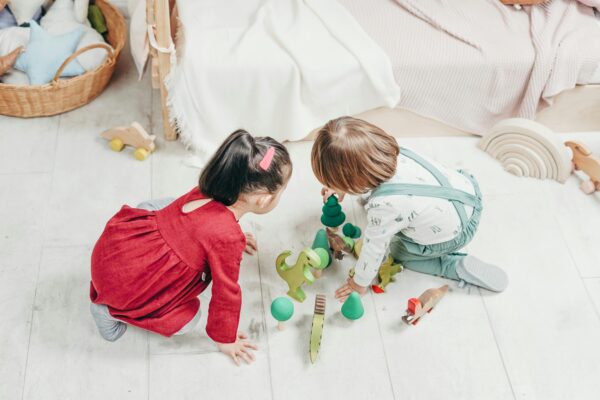
Outdoor activities are not only fun but also provide a rich sensory experience. Nature offers a range of sensory stimuli that can be beneficial for children with disabilities.
Activities like nature walks, gardening, or a simple visit to the park can be extremely rewarding. Look for inclusive playgrounds that have been designed with disabled children in mind, offering features like wheelchair-accessible swings and sensory play panels.
If incontinence care is a concern, iD products can offer peace of mind. These products are designed to provide comfort and protection, allowing your child to enjoy outdoor activities without worry. Check out the range of iD products here for more information.
Look for community events that are inclusive. Many local libraries offer sensory-friendly story times, and community centers may have adaptive sports programs. Participating in these activities can provide both social and developmental benefits for your child.

Parental supervision is crucial in monitoring how children interact with sensory materials. Of course, parental supervision is always needed when children are interacting with sensory materials. A parent's engagement and guidance ensures a positive and fun experience for both!
Engaging sensory activities can be fun and development for children. By planning personalised and accessible activities, leveraging community resources, and integrating technology where appropriate, both you and your children can have a fun and relaxed summer! Share your own tips and experiences in the comments section, and make sure to visit our blog for more valuable resources.
Urinary incontinence is a common condition that affects many individuals. Understanding the causes and symptoms of urinary incontinence is the first step towards managing and finding relief from this condition.
One of the main causes of urinary incontinence is weak pelvic floor muscles. These muscles play a crucial role in supporting the bladder and controlling urine flow. When these muscles are weak, it can lead to urine leakage during activities such as coughing, sneezing, or laughing. Hormonal changes, such as those that occur during pregnancy and menopause, can also contribute to urinary incontinence. Additionally, nerve damage caused by conditions like diabetes or multiple sclerosis can affect the bladder's ability to function properly.
The symptoms of urinary incontinence can vary depending on the individual and the underlying cause. Some common symptoms include frequent urination, sudden urges to urinate, urine leakage during physical activities, and waking up multiple times during the night to urinate. It's important to consult with a healthcare professional for an accurate diagnosis and to determine the best course of treatment for your specific situation.
Exercise is an effective and natural way to manage and reduce the symptoms of urinary incontinence. Regular exercise can help strengthen the pelvic floor muscles, improve bladder control, and reduce the frequency and severity of urine leakage. Additionally, exercise can also help maintain a healthy weight, which can further alleviate the pressure on the bladder and reduce the risk of urinary incontinence.
Incorporating exercises that target the pelvic floor muscles, such as Kegel exercises, can significantly improve bladder control and reduce urine leakage. These exercises involve contracting and relaxing the muscles that control urine flow, helping to strengthen them over time. It's important to consult with a physical therapist or healthcare professional before starting any exercise programme to ensure you are performing the exercises correctly and to determine the most suitable exercise routine for your needs.


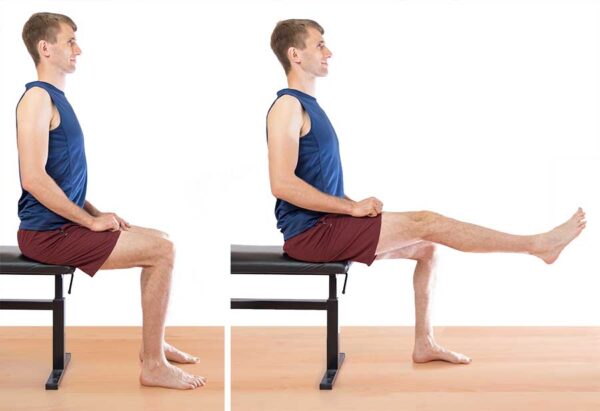
Remember to start slowly and gradually increase the intensity and duration of these exercises. It's important to listen to your body and not push yourself too hard. Consistency is key when it comes to seeing improvements in urinary incontinence symptoms.
Incorporating exercises into your daily routine can help ensure consistency and maximise the benefits for managing urinary incontinence. Here are some tips to help you get started:
Managing incontinence can be challenging, but the good news that it's crucial to recognise that it's a common and manageable condition. It's a journey unique to each individual so this blog aims to explain the significance of understanding the diverse stages of incontinence and how selecting the appropriate products can empower you to regain control, confidence, and an active lifestyle. Let's break it down and explore the products that can help you or your loved ones manage this situation more comfortably.
If you're experiencing occasional leaks, particularly during activities like sneezing or coughing, consider using incontinence pads or liners with light absorbency. These discreet shields effortlessly fit into your regular underwear, effectively managing minor leaks without any hassle. If you are new to this, you can explore our blog post about Myths and Realities About Urinary Incontinence to learn more.
The products can be worn in your own underwear.
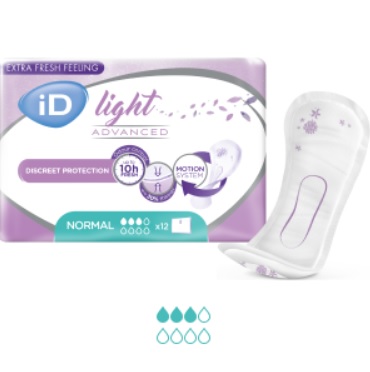 |
| View products » |
If you find yourself dealing with more frequent and sudden urges to use the bathroom, then it could be time for something with a bit more defence. Look for absorbent pads or pants with higher absorbency. They not only provide better protection but also control any unwanted odours, letting you go about your day confidently.
If you are still active and want maximum protection, then consider pants with higher absorbency. However, you don’t have to let your life be ruled by bladder weakness. You can read our blog about a step-by-step guide to some bladder control exercises that may help improve your symptoms: Strengthen Your Pelvic Floor - Ontex Healthcare
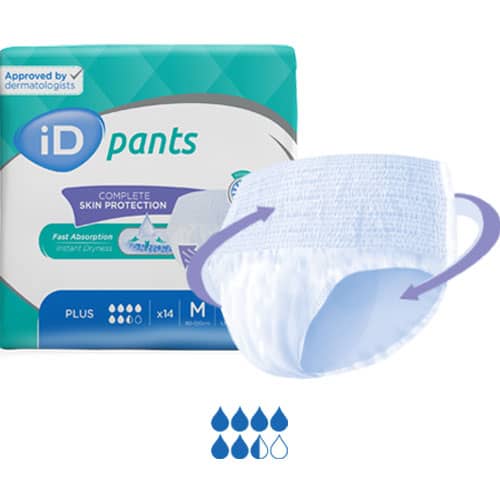 |
| View products » |
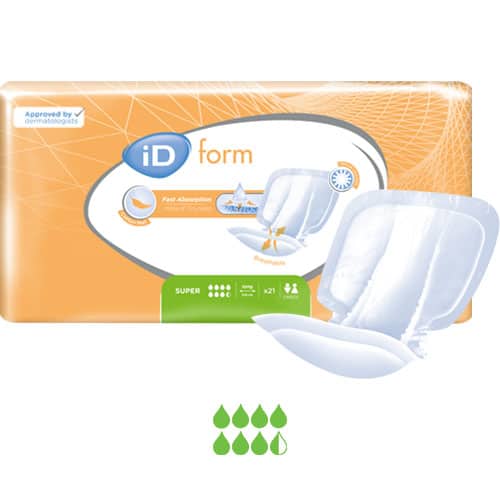 |
| View products » |
In this stage, where leaks become more constant with more urine, then it could be time for the next level of protection. Highly absorbent adult all-in-one style or briefs are your go-to. They offer maximum absorbency, adjustable tabs for a custom fit, and advanced anti-leak features to keep you feeling secure. The constant contact with urine or faeces can result in skin breakdown, inflammation, and infections. It's crucial to address these concerns promptly to maintain skin health and prevent complications. For further insights into incontinence and its impact on skin integrity, read our blog about Skincare & Incontinence
For maximum protection, we recommend our product called Slips
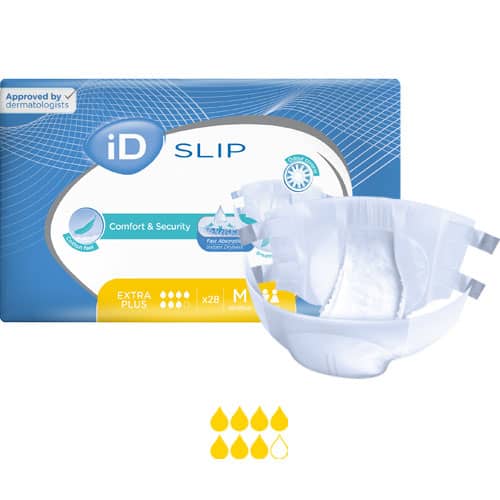 |
| View Products » |
If you're dealing with faecal incontinence, where it's about solid waste, it's essential to note that stool is not absorbed by a product this is designed primarily for fluids. Thus, we recommend choosing products with lower absorption and to change them more often. If you're still very mobile, then iD pants could be a good option. For mobile, consider an all-in-one product like the iD Slip.
Incontinence doesn't have to be a barrier to living life to the fullest. Managing continence care can be different for each person, so finding the right product for you can make a significant difference. Whether it's a light pad, or discreet pants, our goal is to help you regain your confidence and live life to the full.
Remember, talking to healthcare professionals is key for personalised advice on managing incontinence effectively.
This article was originally published on iD Direct and has been edited and republished here with permission.
iD is the flagship brand of Ontex's range of adult care personal hygiene solutions. With over 40 years of experience, Ontex has developed innovative personal hygiene solutions to deliver high quality, affordable products to our customers across the globe.
Ontex's iD brand of disposable continence solutions is developed using the latest innovation and technology to provide maximum discretion as well as keep you safe and secure through fast absorption technologies. It is through our products, our practices and our people that we have got you covered for all your continence needs. Try one of our products today and choose to be confident - choose iD!
Embarking on a journey is an exciting adventure, and for those managing incontinence, it can present unique challenges. But fear not! With a bit of careful planning and a positive outlook, you can make the most of your travels without letting continence care become a roadblock. In this blog post, let's dive into some practical tips and strategies for navigating these challenges while on the road.
Before setting off on your adventure, take some time for thorough planning. Look into restroom locations, their accessibility, and availability at your destination. Consider accommodations with private bathrooms and proximity to public facilities. Pack more supplies than you think you'll need, including absorbent continence care products, to cover the entire length of your trip. It also would be a good idea to pack the more absorbent version of your chosen incontinence product. This thoughtful preparation ensures that you're well-equipped to manage comfort and absorbency throughout the duration of the travel, contributing to a smoother and more relaxed travel experience. Check out our blog post on the “Understanding the different stages of incontinence and choosing the right products” for support on the different options available.
Select modes of transportation that make restroom access convenient. Trains often have onboard facilities, while airlines can offer accessible restrooms. When flying, consider reserving an aisle seat and choosing a seat in the front or end of the plane for easier access to restrooms on the plane. If you're driving, plan your route with regular rest stops in mind.
Pack enough pairs to cover the duration of your trip, plus a few extras.
Carry a travel-sized pack of gentle, fragrance-free wipes for a quick and refreshing clean. Look for wipes that are suitable for sensitive skin to prevent irritation.
Include small, discreet disposable bags for the hygienic disposal of used incontinence products. This ensures a discreet and odour-free solution when proper disposal facilities are unavailable.
Maintain hand hygiene with a travel-sized hand sanitizer. Choose one with a high alcohol content for effective germ elimination, especially when restroom facilities may not have soap and water.
Protect your skin by including a moisturiser or barrier cream. This helps prevent irritation and promotes skin health, especially during extended travel periods.
Before your journey, take a moment to identify nearby laundromats or laundry facilities along your route. Knowing their locations can be especially handy for longer trips, ensuring you have access to laundry services if needed. For longer journeys, also pack a small amount of travel-sized laundry detergent. This allows you to wash and refresh your underwear as needed, ensuring a constant supply of clean options.
Staying hydrated is essential, particularly while traveling. However, it's important to be mindful of triggers that may affect your incontinence. To minimise the frequency of bathroom visits, consider moderating your intake of caffeine and alcohol. Instead, choose water-rich foods to support hydration, and keep a reusable water bottle on hand. This way, you can stay properly hydrated without overindulging in beverages that might exacerbate incontinence.
Make technology work for you. Smartphone apps and websites can assist in finding nearby restrooms, planning routes with accessible facilities, and even offering real-time information on restroom availability. This tech-savvy approach is especially useful in unfamiliar areas. For example, National Public Toilet Map, a comprehensive guide showcasing over 23,000 public and private facilities across Australia, including toilets, adult change, and baby care amenities. This invaluable resource, funded by the Australian Government Department of Health and Aged Care through the National Continence Program, is managed by the Continence Foundation of Australia. You can download the app through:
Public Toilet Map – Apps on Google Play
Traveling with incontinence demands thoughtful preparation, but it certainly shouldn't hold you back from exploring the world. By planning ahead, staying organised, and maintaining a positive attitude, you can navigate incontinence challenges and relish the enjoyment of travel without compromise. Remember, with the right mindset and strategies, the world is still yours to explore. Safe travels!
This article was originally published on iD Direct and has been edited and republished here with permission.
iD is the flagship brand of Ontex's range of adult care personal hygiene solutions. With over 40 years of experience, Ontex has developed innovative personal hygiene solutions to deliver high quality, affordable products to our customers across the globe.
Ontex's iD brand of disposable continence solutions is developed using the latest innovation and technology to provide maximum discretion as well as keep you safe and secure through fast absorption technologies. It is through our products, our practices and our people that we have got you covered for all your continence needs. Try one of our products today and choose to be confident - choose iD!
Everyone knows that sports and exercise can be really good for your health, boosting benefits such as decreasing your risk of major illness by up to 30%1. In fact, it’s recommended that you do a mixture of strengthening exercises and moderate-intensity activity four to five times a week2. Yet, if you experience incontinence, participating in sports can be daunting. Some studies even show that up to 20% of women have reported quitting exercise due to the fear of leaks3. But, playing sport is possible with bladder weakness, and there are even some forms of exercise that can improve your symptoms!
Incontinence is defined as the unintentional passing of urine, and it can be categorised into the following types:
In terms of how incontinence can affect sports, stress incontinence is the most common issue as it can cause you to leak urine when you exercise. However, there are still plenty of sports you can play while experiencing incontinence.
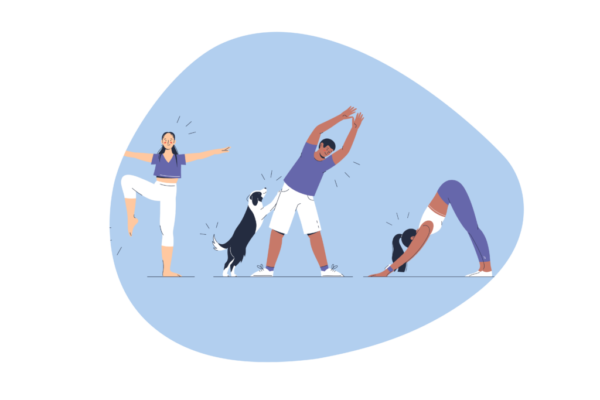
Firstly, there are certain sports that can cause you to experience incontinence more frequently, especially stress incontinence. For example, high-impact exercise, such as sit-ups and aerobics, can put extra strain on your bladder and therefore potentially cause leaks5. Other forms of exercise to avoid include any sports that involve skipping, jumping and excessive weights and core training.6 Nonetheless, there are still plenty physical activities you can enjoy with an overactive bladder.
While some sports can make symptoms of urinary incontinence (UI) worse, there are many bladder-friendly exercises you can enjoy. Activities that strengthen your pelvic floor are ideal if you experience bladder weakness. These include:
As these don’t apply pressure to the pelvic floor,9 you are less likely to leak urine. They can also improve your pelvic floor muscles, thus lessening your incontinence symptoms10. Plus, getting active can help you to lose weight11, which, in turn, can make leakages less frequent. This is because carrying extra weight can put more pressure on your bladder, making UI symptoms worse12. We highly recommend that you speak to your doctor before you take up a new exercise regime.
Finally, there are other things you can do to lessen the chance of experiencing incontinence while playing sports. In addition to focusing on bladder-friendly sports, we suggest:
We hope this article has shown you that it’s possible, and even beneficial, to continue to play sports when you have incontinence!
1 “Benefits of exercise”, NHS, 4 August 2021, Source: https://www.nhs.uk/live-well/exercise/exercise-health-benefits/
2 “Physical activity guidelines for adults aged 19 to 64”, NHS, 4 August 2021, Source: https://www.nhs.uk/live-well/exercise/exercise-guidelines/physical-activity-guidelines-for-adults-aged-19-to-64/
3 “Exercising with incontinence”, Phil Wilkinson, n.d., Source: https://www.independenceaustralia.com.au/health-articles/continence/exercising-with-incontinence/
4 “Urinary incontinence”, NHS, 7 November 2019, Source: https://www.nhs.uk/conditions/urinary-incontinence/
5 “10 ways to stop leaks”, NHS, 7 November 2019, Source: https://www.nhs.uk/conditions/urinary-incontinence/10-ways-to-stop-leaks/
6 “Exercising with incontinence”, Phil Wilkinson, n.d., Source: https://www.independenceaustralia.com.au/health-articles/continence/exercising-with-incontinence/
7 “10 ways to stop leaks”, NHS, 7 November 2019, Source: https://www.nhs.uk/conditions/urinary-incontinence/10-ways-to-stop-leaks/
8 “Exercising with incontinence”, Phil Wilkinson, n.d., Source: https://www.independenceaustralia.com.au/health-articles/continence/exercising-with-incontinence/
9 “Loss of bladder control and sport: What can I do?”, Fizimed, 19 June 2019, Source: https://www.fizimed.com/en/blog/bladder-control/
10 “10 ways to stop leaks”, NHS, 7 November 2019, Source: https://www.nhs.uk/conditions/urinary-incontinence/10-ways-to-stop-leaks/
11 “12 tips to help you lose weight”, NHS, 29 November 2019, Source: https://www.nhs.uk/live-well/healthy-weight/managing-your-weight/12-tips-to-help-you-lose-weight/
12 “Urinary incontinence: 5 ways you may be making your symptoms worse”, King Edward VII’s Hospital, n.d., Source: https://www.kingedwardvii.co.uk/health-hub/urinary-incontinence-5-ways-you-may-be-making-your-symptoms-worse
13 “What NOT to do at the gym”, Continence Foundation of Australia, 22 September 2016, Source: https://www.continence.org.au/news/what-not-do-gym
14 “7 Urologic Conditions Impacted by Smoking”, Urology Care Foundation, 14 March 2018, Source: https://www.urologyhealth.org/healthy-living/care-blog/2018/7-urologic-conditions-impacted-by-smoking
15 “Alcohol and The Impact It Has on Your Bladder and Bowels”, Ruth Hilton, 8 August 2018, Source: https://www.hartmanndirect.co.uk/information-centre/alcohol-and-the-impact-it-has-on-your-bladder-and-bowels/
This article was originally published on iD Direct and has been edited and republished here with permission.
iD is the flagship brand of Ontex's range of adult care personal hygiene solutions. With over 40 years of experience, Ontex has developed innovative personal hygiene solutions to deliver high quality, affordable products to our customers across the globe.
Ontex's iD brand of disposable continence solutions is developed using the latest innovation and technology to provide maximum discretion as well as keep you safe and secure through fast absorption technologies. It is through our products, our practices and our people that we have got you covered for all your continence needs. Try one of our products today and choose to be confident - choose iD!

